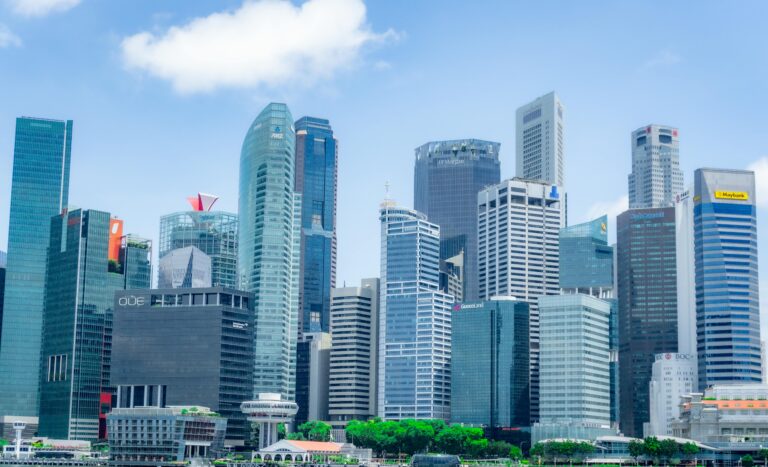
Singapore, a small island nation in Southeast Asia, boasts one of the most dynamic and resilient economies in the world. Known for its strategic location, robust infrastructure, and business-friendly policies, Singapore has transformed itself from a developing country to a global economic powerhouse within a few decades.
Read more Singapore-related topics here: https://learntodrivesg.com/
Historical Background
Singapore’s economic journey began in earnest after gaining independence from Malaysia in 1965. At that time, it was a low-income nation with limited natural resources. Under the leadership of its first Prime Minister, Lee Kuan Yew, Singapore embarked on a path of rapid industrialization and economic development. The government implemented a series of strategic policies aimed at attracting foreign investment, developing a skilled workforce, and creating a pro-business environment.
Key Economic Sectors
1. Financial Services
Singapore is one of the leading financial hubs in Asia and the world. Its well-regulated financial sector, coupled with a strong legal framework and political stability, has attracted numerous global financial institutions. The city-state is a major center for banking, insurance, investment management, and foreign exchange trading. The Monetary Authority of Singapore (MAS) plays a crucial role in maintaining the stability and integrity of the financial system.
2. Trade and Logistics
With its strategic location along major shipping routes, Singapore has developed into one of the busiest ports globally. The Port of Singapore is a critical node in global trade, handling a significant volume of container traffic. The nation’s logistics and supply chain management sectors are highly advanced, supported by state-of-the-art infrastructure and technology.
3. Manufacturing and Electronics
Manufacturing remains a vital pillar of Singapore’s economy, contributing significantly to its GDP. The country is a global leader in the production of semiconductors, electronics, pharmaceuticals, and precision engineering products. Government initiatives have promoted innovation and research and development, ensuring that Singapore remains competitive in high-tech manufacturing.
4. Tourism
Tourism is another crucial sector, with Singapore attracting millions of visitors annually. Iconic attractions such as Marina Bay Sands, Gardens by the Bay, and Sentosa Island, along with a rich cultural heritage, make Singapore a popular destination. The tourism sector is a significant source of employment and revenue for the country.
Economic Policies and Initiatives
The Singaporean government has consistently implemented forward-thinking economic policies to ensure sustainable growth. Key initiatives include:
- Economic Diversification: Efforts to diversify the economy have reduced dependence on any single sector, enhancing resilience against global economic fluctuations.
- Innovation and R&D: Significant investments in research and development, particularly in emerging fields such as biotechnology, artificial intelligence, and fintech.
- Human Capital Development: Emphasis on education and skills training to ensure a highly skilled workforce. Institutions like the National University of Singapore (NUS) and Nanyang Technological University (NTU) are globally recognized for their excellence.
- Business Environment: Maintenance of a transparent, efficient, and corruption-free business environment. Singapore consistently ranks among the top countries in global ease of doing business indices.
Challenges and Future Outlook
Despite its successes, Singapore faces several challenges. The small domestic market limits internal demand, making the economy heavily reliant on external trade and investment. Additionally, an aging population poses long-term demographic and economic challenges. The government is addressing these issues through policies aimed at encouraging higher birth rates and attracting foreign talent.
Looking ahead, Singapore aims to solidify its position as a global innovation hub. The nation is focusing on digital transformation, smart city initiatives, and sustainable development to drive future growth. By leveraging its strategic advantages and continuously adapting to global trends, Singapore is well-positioned to navigate the complexities of the modern economic landscape.
Challenges Facing Singapore
Singapore, while renowned for its economic success and efficient governance, faces several challenges that could impact its future trajectory:
- Aging Population: Singapore’s low birth rate and increasing life expectancy have resulted in a rapidly aging population. This demographic shift poses challenges for healthcare, retirement adequacy, and economic productivity.
- Economic Restructuring: As Singapore aims to transition from a manufacturing and trade-reliant economy to one driven by innovation and services, it must navigate economic restructuring challenges, including job displacement and skills mismatches.
- Income Inequality: Despite its prosperity, Singapore grapples with income inequality. The high cost of living, wage disparities, and social mobility issues remain significant concerns.
- Environmental Sustainability: Singapore faces environmental challenges such as rising sea levels, waste management, and ensuring a sustainable water supply. Balancing economic growth with environmental sustainability is crucial.
- Geopolitical Uncertainty: As a small, open economy, Singapore is vulnerable to global geopolitical tensions and trade disruptions that could affect its trade-dependent economy.
Future Outlook and Strategic Initiatives
To address these challenges and secure its future prosperity, Singapore is pursuing strategic initiatives across various fronts:
- Innovation and Technology: Investing heavily in research and development, promoting innovation, and nurturing a vibrant startup ecosystem to drive economic diversification and competitiveness.
- Skills Development: Enhancing education and training systems to equip Singaporeans with relevant skills for emerging industries, fostering lifelong learning, and upskilling to meet future job demands.
- Sustainable Development: Implementing sustainable urban planning, green initiatives, and renewable energy projects to mitigate environmental impact and enhance resilience against climate change.
- Social Policies: Continuously reviewing and enhancing social safety nets, healthcare systems, and affordable housing policies to address income inequality and ensure social inclusivity.
- Global Connectivity: Strengthening international partnerships, trade agreements, and connectivity initiatives to expand market access, diversify economic linkages, and mitigate geopolitical risks.
Conclusion
Singapore’s economic story is one of remarkable transformation and resilience. From a small, resource-scarce nation, it has become a global economic powerhouse through strategic planning, innovation, and a commitment to excellence. As it continues to evolve and adapt, Singapore remains a model of economic success and a beacon of stability in the region.





